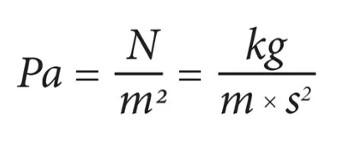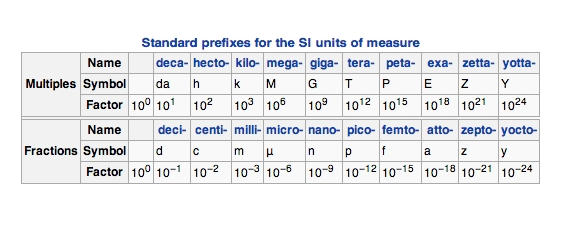Table of Contents
What is the SI Unit of Pressure is?
One newton per square meter (N/m2 or kg m-1s-2) is equivalent to one pascal (represented as Pa), the SI unit of pressure. This name was surprisingly awarded in 1971. Before that, the SI used newtons per square meter to measure pressure.
SI Unit of Pressure According to Pascal Formula

The SI Unit of Pressure
For pressure, the SI system’s basic unit is Pascal (Pa), which is Nm²
In the formula, we can define it as:
Pa = N/m2 = kg/ m xs2
A low-pressure unit is the Pascal. The equivalent of the average atmospheric pressure is roughly 101325 Pa.
By applying Pascal’s definition, the can be changed to other units, such as g (gramme), force, and metre, centimetre, or millimetre.
By doing this, we can obtain more pressure variations or units, such as kgfm2, gfm2, kgfcm2, gfcm2, kgfmm2, and gfmm2, to name a few.
In some places, the unit “bar” is still frequently used. Despite having a metric foundation, it does not follow the SI system. Even though the bar is 100000 times Pascal (or 100 times kpa), conversion is still simple.
Given the vast variety of possible estimated amounts, a standard prefix approach has been established.
We can use the conventional prefixes/coefficients before them, such as milli 1100, centi 110, hector, kilo (1000), and mega, as with all pressure units, whether SI or not (1000000).
We already have several other units, such as Pa, hPa, and Mpa, to name a few common uses. The unit bar is most frequently written as bar without a prefix or as bar with a prefix for “milli.”
But when we combine all of the volume units with all of the SI framework zone units, we obtain a variety of variances.
Definition of Pressure
The force per unit area that is perpendicular to the surface is what is referred to as the pressure. As a result, the formula is frequently written as P = FA.
Although the capital “P” can also be seen being used on occasion, pressure is denoted by the letter.
SI Unit of Pressure- Force Per Unit Area
The force per area suggests that a certain area is affected by a specific power. In terms of force, it is written as. There are a great number of these variations because there are so many distinct engineering methods that are utilised for both mass and area. Although they are occasionally specified, a large number of stress units do not expressly state the mass or region in their names.
It is encouraging to note that the “force” is not consistently spelled out in the names of pressure units in everyday life.
SI Unit of Pressure- Important Points
- The pressure is the force acting perpendicularly on a unit area of the object.
- The formula for calculating pressure is Pressure = Force/Area.
- The SI Unit of measuring force is ‘Newton’ (N) and the SI Unit of measuring area is ‘meter square’ (m2).
- Therefore the SI Unit of measuring Pressure is ‘newtons per square meter’ ((N/m2 or Nm-2).
- It is also called Pascal (Pa).
SI Unit of Pressure- Important Terms
- A tool for measuring atmospheric pressure is a barometer.
- Pressure is the product of the force multiplied by the area for which it is applied.
- One newton per square metre is represented by the derived unit of pressure and stress known as the pascal in the International System of Units (symbol: Pa).
- Newton the International System of Units, the derived unit of force; the force required to accelerate a mass of one kilogram by one meter per second per second; symbol: N
- International System of Units basis of the metric system; SI, from the French Système international d’unités; metric measurements derive from seven base units and multiples of ten.
Standard Prefix for the SI Units
A unit’s name may have a prefix appended to it to designate a multiple of the original unit.
As a result, writing out extremely small and extremely big figures, like 1 mPa (millipascal, 10-3) or 1 GPa, is made simple (gigapascal, 109, e.).
Numerous units and prefixes can be used to represent pressure. It’s crucial to make sure that all dimensions are expressed in the same unit system when calculating pressure.

SI Unit of Pressure- Solved example
Que. On a given day, the atmospheric pressure is 770 mm Hg. What is the pressure in pascals?
770mmHg X 101.3 pa/760mmHg = 102.6 Pa
The pressure is 102.6 pascals.
SI Unit of Pressure- FAQs
Que. What is the SI Unit of Pressure?
Ans. The SI Unit of Pressure is Pascal.
Que. What is the formula to calculate Pascal?
Ans. The formula to calculate Pascal is Pa = N/m2 = kg/ m xs2
Que. What are 5 units of pressure?
Ans. There are several other units of pressure such as pounds per square inch and bar, unit of atmospheric pressure is atm, centimetres of water, millimetres of mercury or inches of mercury (used as a unit of blood pressure), torr, MSW and FSW.
Que. What are the units of pressure?
Ans. The pascal (Pa) is the unit of pressure or stress in the International System of Units (SI).


 CMAT Exam Date 2024, Admit Card Release ...
CMAT Exam Date 2024, Admit Card Release ...
 JKBOSE 8th Class Result 2024 Out, Check ...
JKBOSE 8th Class Result 2024 Out, Check ...
 NMMS UP Result 2024 OUT, Get Result &...
NMMS UP Result 2024 OUT, Get Result &...














